
Using CO2 as a ventilation clue!
Welcome to a long thread about seven complications related to using CO2 for indoor ventilation measurements...
It be fun... really!
1/
Welcome to a long thread about seven complications related to using CO2 for indoor ventilation measurements...
It be fun... really!
1/
COMPLICATION #1. CO2 does NOT equal IAQ (Indoor air quality). CO2 is a good surrogate for human emissions. But in indoor spaces we have emissions from building materials, furniture, cleaning agents, and cooking. 2/
COMPLICATION #1 (Cont). In addition to the 1,000’s of chemical from those sources we also have indoor chemistry happening in the air. So CO2 is a good measure of required ventilation only in places with lots of people (classrooms, gyms) where human emissions dominate. 3/
There are two ways to use CO2 for ventilation assessment. The first way is a "stoplight assessment" looking single CO2 measurement to make a determination as shown in this example (drive.google.com/file/d/1jFavuc…): 4/ 

The stoplight assessment is based on ensuring that less than ~1% of air you breathe is coming from other peoples breath. We are assuming that CO2 and virus particles behave in the same manner. 5/ 

COMPLICATION #2: A rooms ventilation is designed for a certain activity. The amount of CO2 emitted by person depends on age, size & activity level (onlinelibrary.wiley.com/doi/full/10.11…). If the room is occupied by a different type person or activity the ventilation will not be appropirate. 6/ 

COMPLICATION #2 (Cont.) Also, it is still unknown how closely viral emission matches these CO2 variations. 7/
COMPLICATION #3: A single CO2 data point does not tell you what to expect to happen while you are going to be in an indoor environment (restaurant, store). For instance, in the room below, if the reading is 590 ppm, you don’t know if the concentration is about to rise or fall. 8/ 

COMPLICATION #3: (Cont). Ideally, if CO2 measurements are presented to inform the general public about the ventilation in an indoor space the trend associated with timeframe that a typical person is in the store should also be displayed (1-1.5 h for grocery store) 9/ 

The other way to use CO2 measurements to assess ventilation is to determine the air change rate and compare it to values deemed to provide sufficient ventilation (schools.forhealth.org/wp-content/upl…) 10/ 
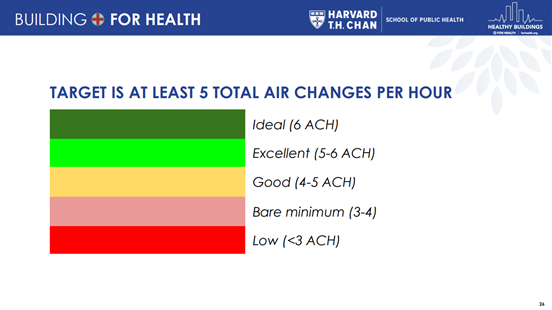
Place a CO2 source (human, dry ice, paint ball or soda making cannister, or vinegar+baking soda) in a room. Once the CO2 concentration reaches 1000-1500 ppm remove the source and record the CO2 concentration decay. 11/
The outdoor CO2 slowly enters the space while the indoor CO2 seeps out. We then perform a "mass balance." This is mass balance is much like keeping track of customers entering and leaving a store we can know the total number of people in the store. 12/ 
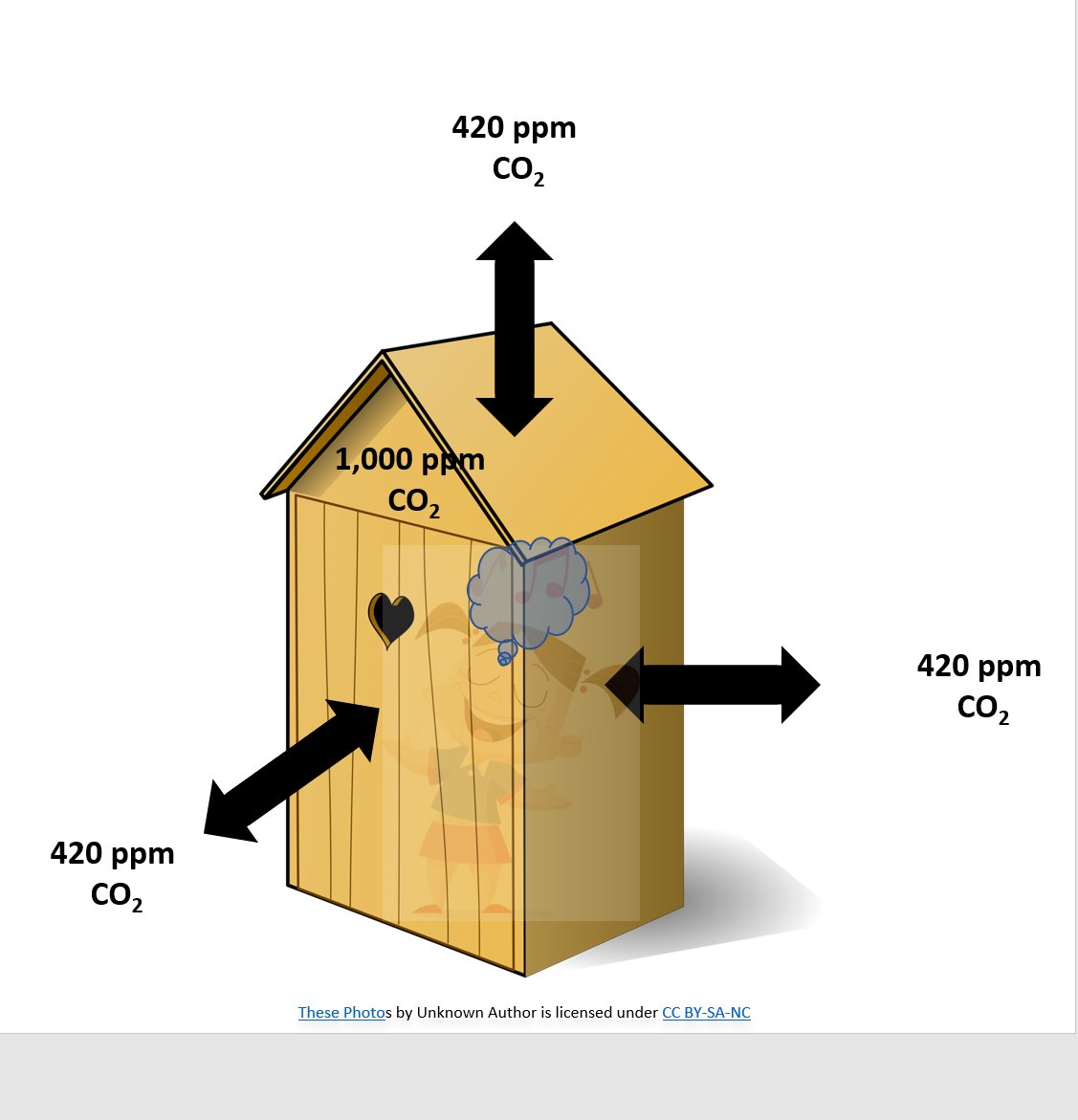
Then we look at the data. I have supervised hundreds of these measurements in students labs in a previous life. Typically, you do not want to use the data 4-5 minutes after the CO2 source is removed (top red box) due to imcomplete mixing. 13/ 

You also don't want to use data below about 600 ppm (bttom red box) as the driving force are low enough sublte differences in outside conditions creates noise in the data. Next you define a time zero, and initial concentration (C t=0). 14/
When graphing result of the equation on the left (below) versus time the slope of that line will be the negative of the air change rate (in hours). In this case 5.5/hour. 15/ 
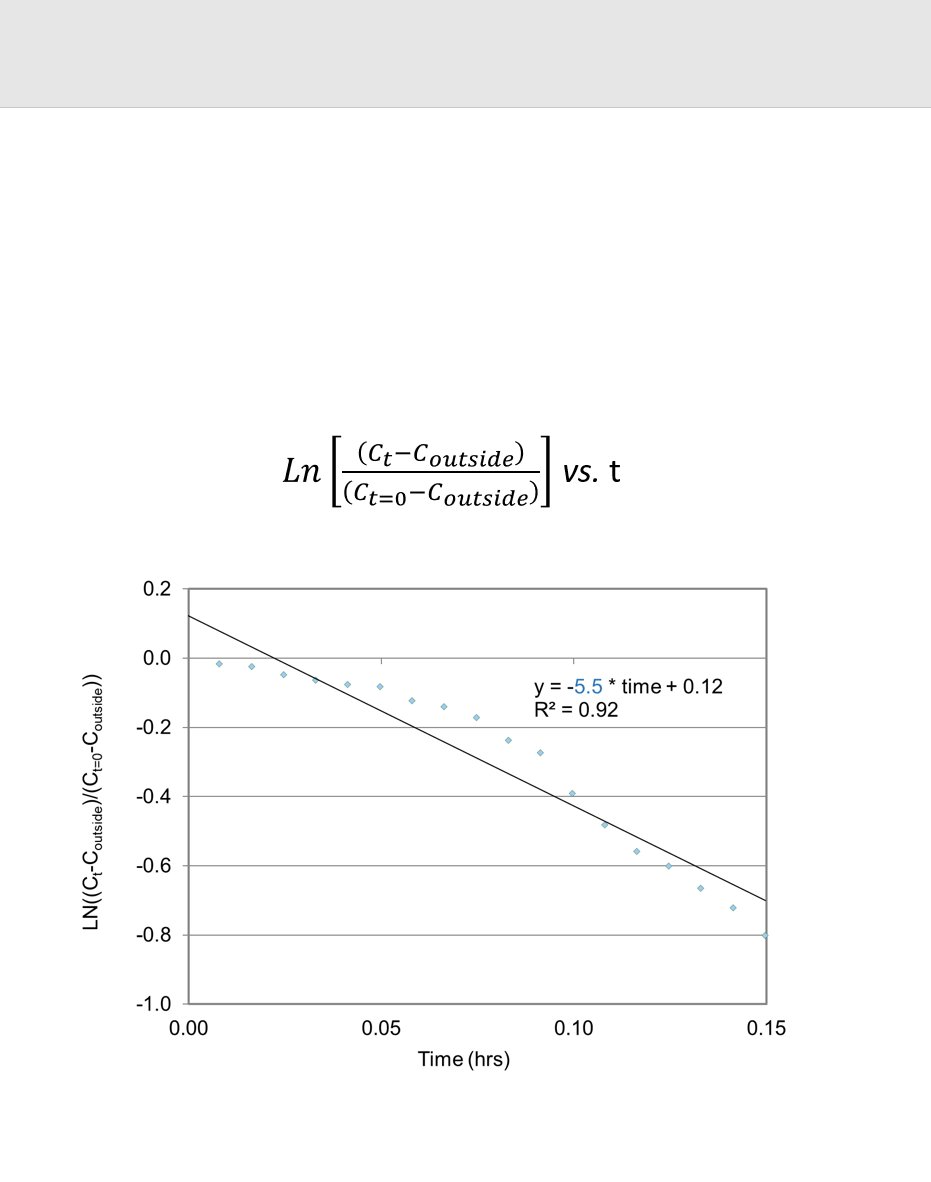
COMPLICATION #4: The curve fit can be highly sensitive to the data choose. By choosing different starting and stopping points you can get air change rates that vary by a +/- 1 per hour. Report air change rates to no more than 0.1 per hour deimcals. 16/
COMPLICATION #5: Air change rates are dependent upon the weather. The figures below show air change rates in a manufactuered home changing by a factor of 5-10 depending on the indoor-outdoor temperature difference and wind speed (sciencedirect.com/science/articl…). 17/ 
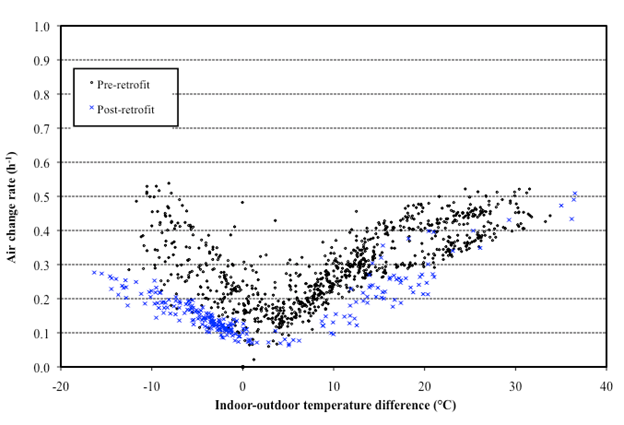
COMPLICATION #5 (Cont) (sciencedirect.com/science/articl…) 18/ 

COMPLICATION #6: Rarely are all rooms in a space well mixed, as is assumed in doing this air change analysis. If we do an CO2 decay while neighboring rooms are empty we will overestimate the outdoor air change rate. (It will quantify how much is leaving the room). 19/ 

COMPLICATION #6 (Cont): If we do it while neighboring rooms are occupied our assumptions of the mass balance model are no longer valid. If we ignore this error we will underestimate the outdoor air change rate. 20/ 
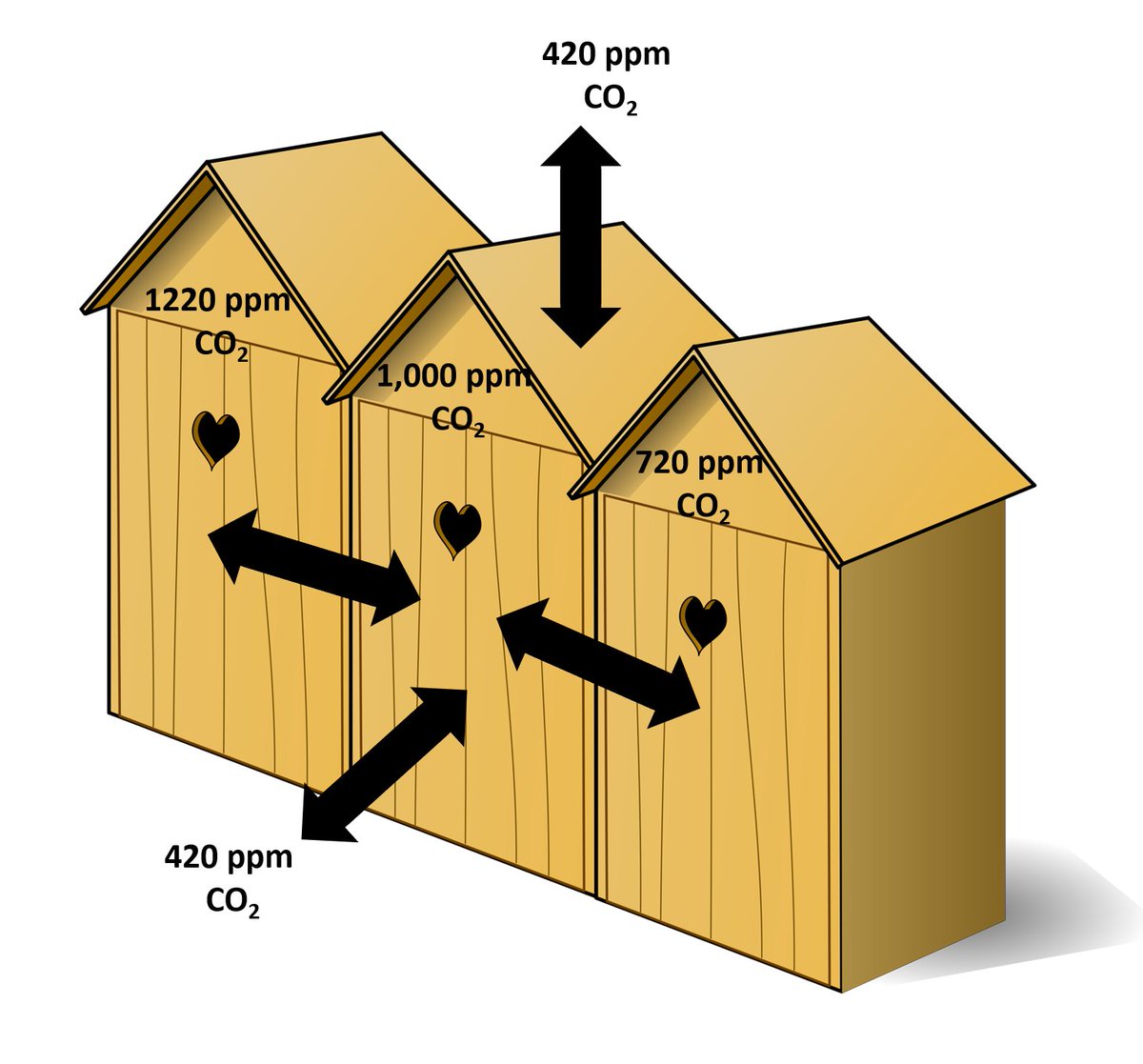
COMPLICATION #7: Rarely in commerical spaces do we have single rooms with dedicated single zone HVAC systems. There are many different types of HVAC systems that can impact whether a room is being mixed with other rooms. 21/ (tsapps.nist.gov/publication/ge…) 
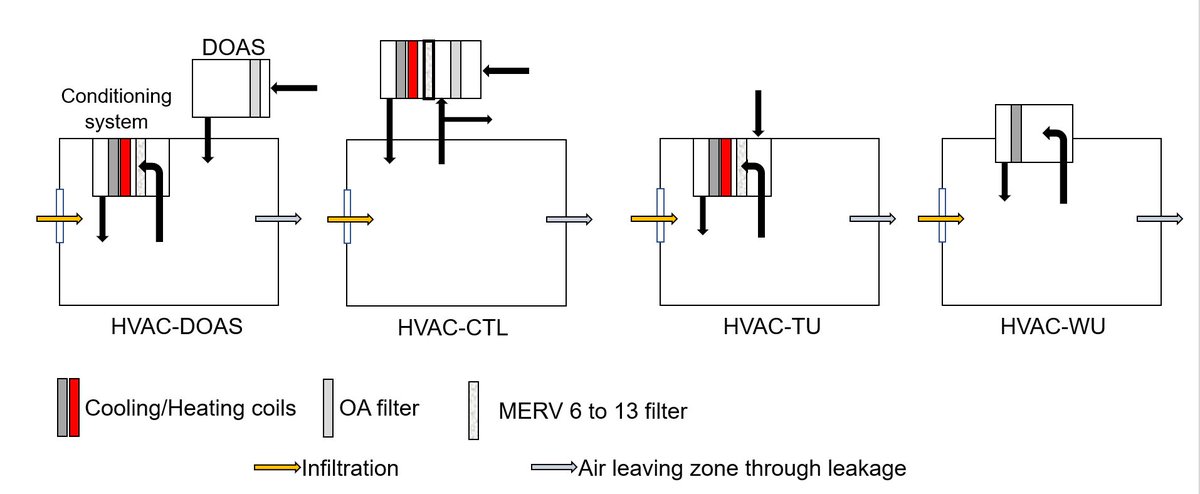
Remember many peoples original interest in CO2 is to reduce exposure to viruses. If a space has portable air filters or HVAC systems with MERV 13 these removal rates need to be added to the air change rate determined by CO2 decay. 22/
CO2 decay tests to determine air change rates will give you a clue to the ventilation in a room, but don't get stuck on a single exact number from one point in time. Make multiple measurements across time and conditions (temperature, door/window openings, ect.) 23/
This is why consumer grade CO2 monitors are awesome educational tools. They allow people (and students) to take ownership of their indoor space, make changes and see the results. (I have not finicial interest in these devices). 24/
Go have fun with science! #LetsEndThisThing. /end.
Postscript. COMPLICATION #8: Consumer grade CO2 sensors can often drift making their absolute numbers questionable if they can't rezero to outside concentrations regularly. There stated accuracy is +/- 50 ppm, but without calibration can drift beyond that range. /end +1
Postscript. COMPLICATION #8 (cont): Dual beam NDIR CO2 sensors are not as prone to drifting, but cost more. /end +2
Postscript. COMPLICATION #8 (cont): However, most CO2 monitors are very good at relative change. So for stoplight applications use the second column in the tweet below (the relative change from unoccupied concentration in the space). /end +3
https://twitter.com/Poppendieck/status/1366055143494410240
Postscript. COMPLICATION #9. Humans are not the only sources of CO2 indoors. For "stoplight anslyses" make sure there are no other sources indoors or sources that impact the CO2 direclty outside the room of interest. /ed +4 

• • •
Missing some Tweet in this thread? You can try to
force a refresh



